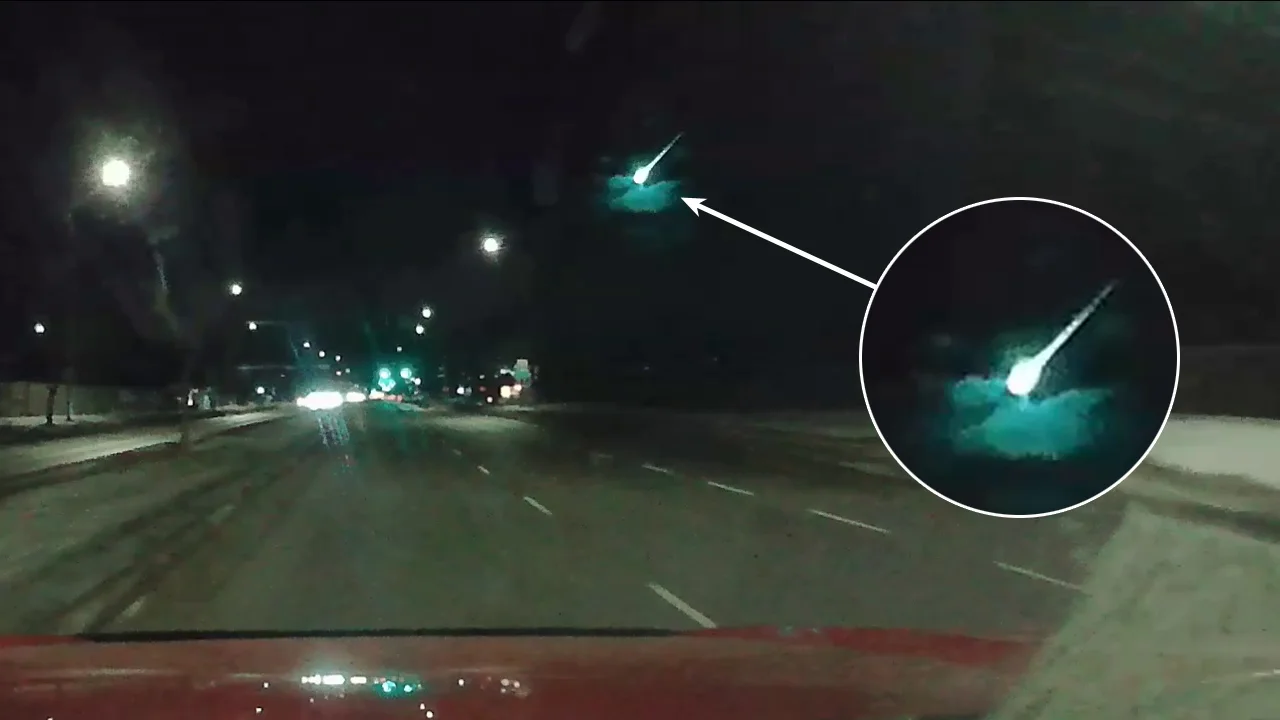
Monday's Alberta fireball ID'd as speeding comet fragment
Monday morning's bright fireball north of Edmonton was identified as a visitor from the edge of our solar system.
This article was originally written on February 22, 2021. It has been updated with new information.
The pre-dawn sky over central Alberta briefly turned green on the morning of Monday, February 22, as it was lit up by an impressive fireball meteor blazing through the air.
According to NASA, it's estimated that Earth sweeps up several metric tons worth of space dust every day as the planet travels along its orbit around the Sun. Once in a while, however, something a little bigger gets in our way, and it makes itself known to us in spectacular fashion.
This is what occurred at just after 6:20 a.m. MST, on the morning of February 22, 2021, a little over 50 kilometres north of Edmonton, Alberta.
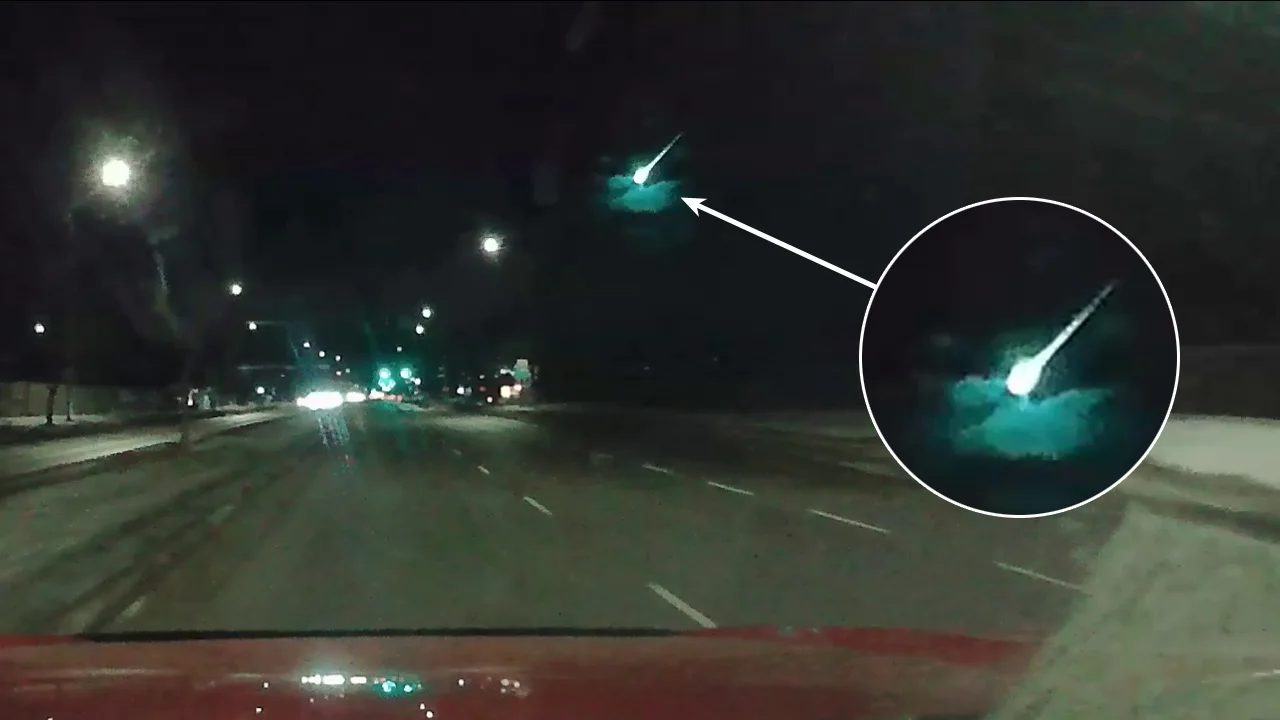
This dashcam view of the fireball (and closeup, inset) shows off the meteor's brightness and green tinge. Credit: Joey Joey/UGC
A small meteoroid plunged into the upper atmosphere and blazed a bright green trail through the air before it fizzled out. This meteor flash was so intense and occurred so high above the ground that witnesses from hundreds of kilometres around spotted it.
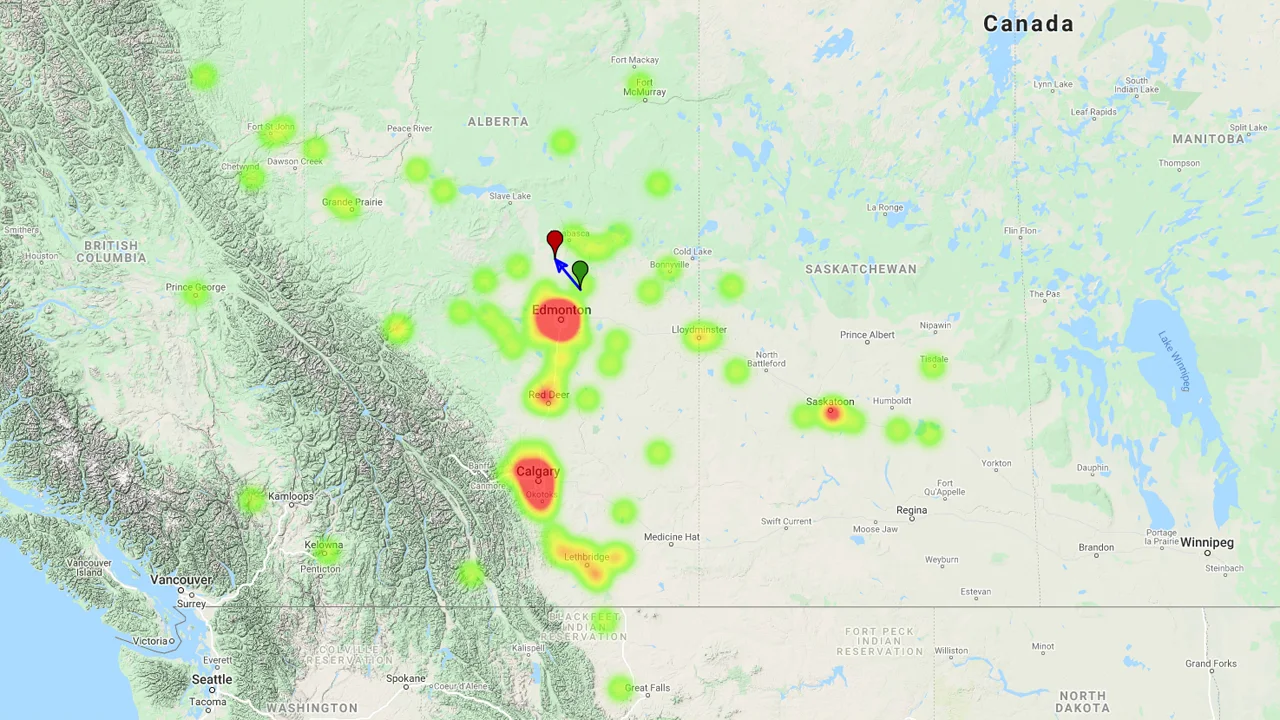
This 'heat map' shows the approximate location of the meteor trail (green arrow), with the splotches of colour indicating the concentration of the reports received by the American Meteor Society as of the afternoon of February 26. Credit: AMS
Due to the relatively clear skies over the west Monday morning, the flash was reported from as far south as Helena, Montana (roughly 500 km south of Calgary). As of the afternoon of February 26, the American Meteor Society has a total of 401 eyewitness reports of this meteor.
A VISITOR FROM FAR AWAY
According to scientists from the University of Alberta, the meteoroid that caused this fireball was travelling exceptionally fast. By analyzing footage from their meteor camera network, they determined its speed at over 220,000 km/h when it plunged into the atmosphere. Examining its trajectory through the air, they also traced back its path through the solar system.
Their analysis pointed to one specific kind of object — a comet.
"Using two observation sites, we were able to calculate both its trajectory and velocity, which tell us about the origin of the meteor and reveal that it was a piece of a comet," said Patrick Hill, a post-doctoral fellow at the University of Alberta, according to Folio. "This chunk was largely made of dust and ice, burning up immediately without leaving anything to find on the ground—but instead giving us a spectacular flash."
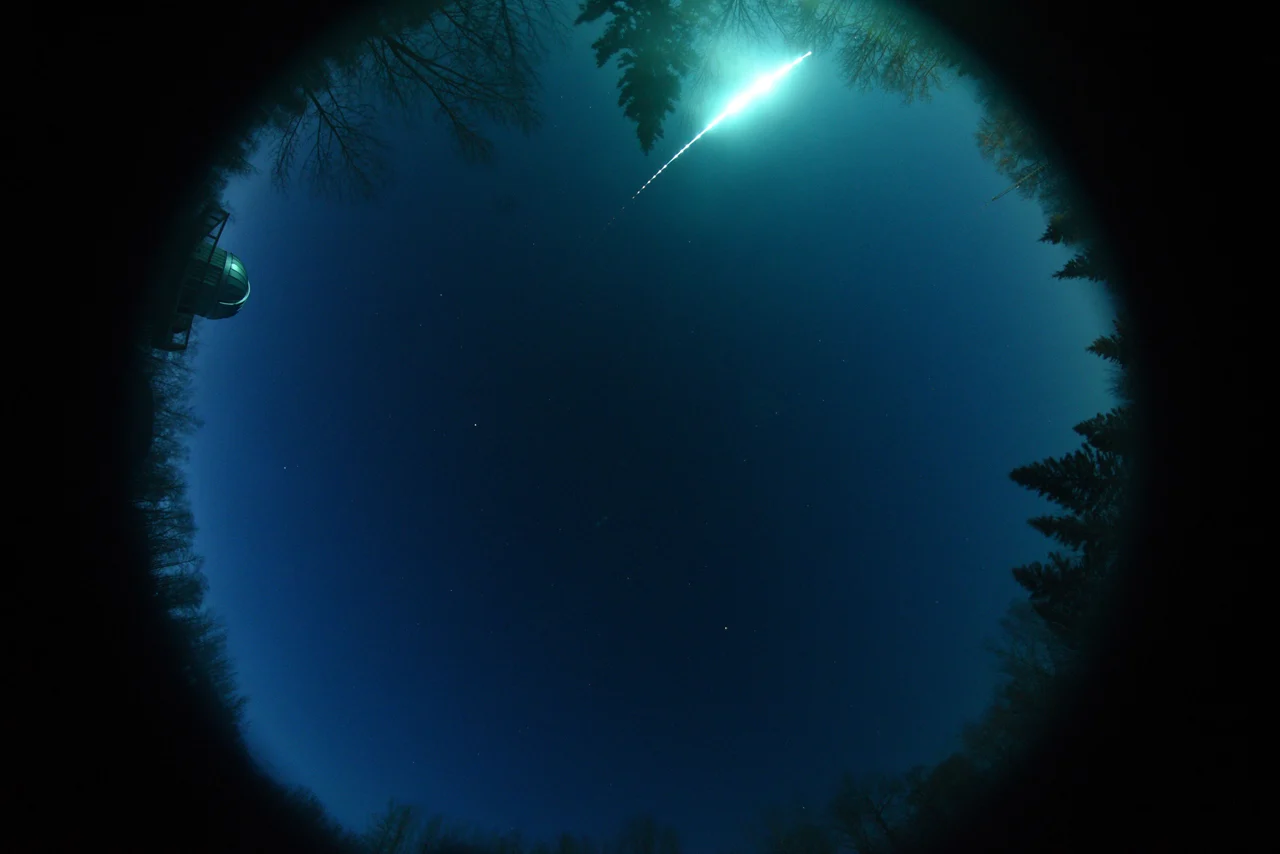
This image was captured at an observation station at Miquelon Lake, part of the Global Fireball Observatory network. Credit: MORP 2.0, University of Alberta
"This incredible speed and the orbit of the fireball tell us that the object came at us from way out at the edge of the solar system — telling us it was a comet, rather than a relatively slower rock coming from the asteroid belt," Professor Chris Herd, the curator of the UAlberta Meteorite Collection, told Folio.
"Comets are made up of dust and ice and are weaker than rocky objects, and hitting our atmosphere would have been like hitting a brick wall for something travelling at this speed," Herd added.
From the speed and brightness of the fireball, Hill and Herd estimated its size was on the order of tens of centimetres wide. The speed and composition of this dusty ice chunk actually played a large role in determining how far away the resulting fireball could be seen.
"All meteoroids — objects that become meteors once they enter Earth's atmosphere — enter at the same altitude and then start to burn up with friction," Hill, who earned his Ph.D. at Western University's Institute for Earth and Space Exploration, explained. "Sturdier, rocky meteoroids can sometimes survive to make it to the ground, but because this was going so fast and was made of weaker material, it flashed out much higher in the atmosphere and was visible from much farther away."
SEEN FROM SPACE
This fireball was not only bright enough to be seen by witnesses from hundreds of kilometres around, but it was also seen by satellites in space.
Both Geostationary Lightning Mapper (GLM) instruments, on board the GOES-16 and GOES-17 geosynchronous weather satellites, picked up the meteor flash during their routine scans for lightning from thunderstorms.
WHAT'S GOING ON HERE?
Out in space, there are likely millions of tiny bits of rock and ice and dust floating around the Sun. These are all leftover pieces from the formation of the solar system over 4.5 billion years ago. As they orbit the Sun, these meteoroids travel at speeds of tens to hundreds of thousands of kilometres per hour. So, if their path happens to intercept Earth, they plunge into the atmosphere at high speed.
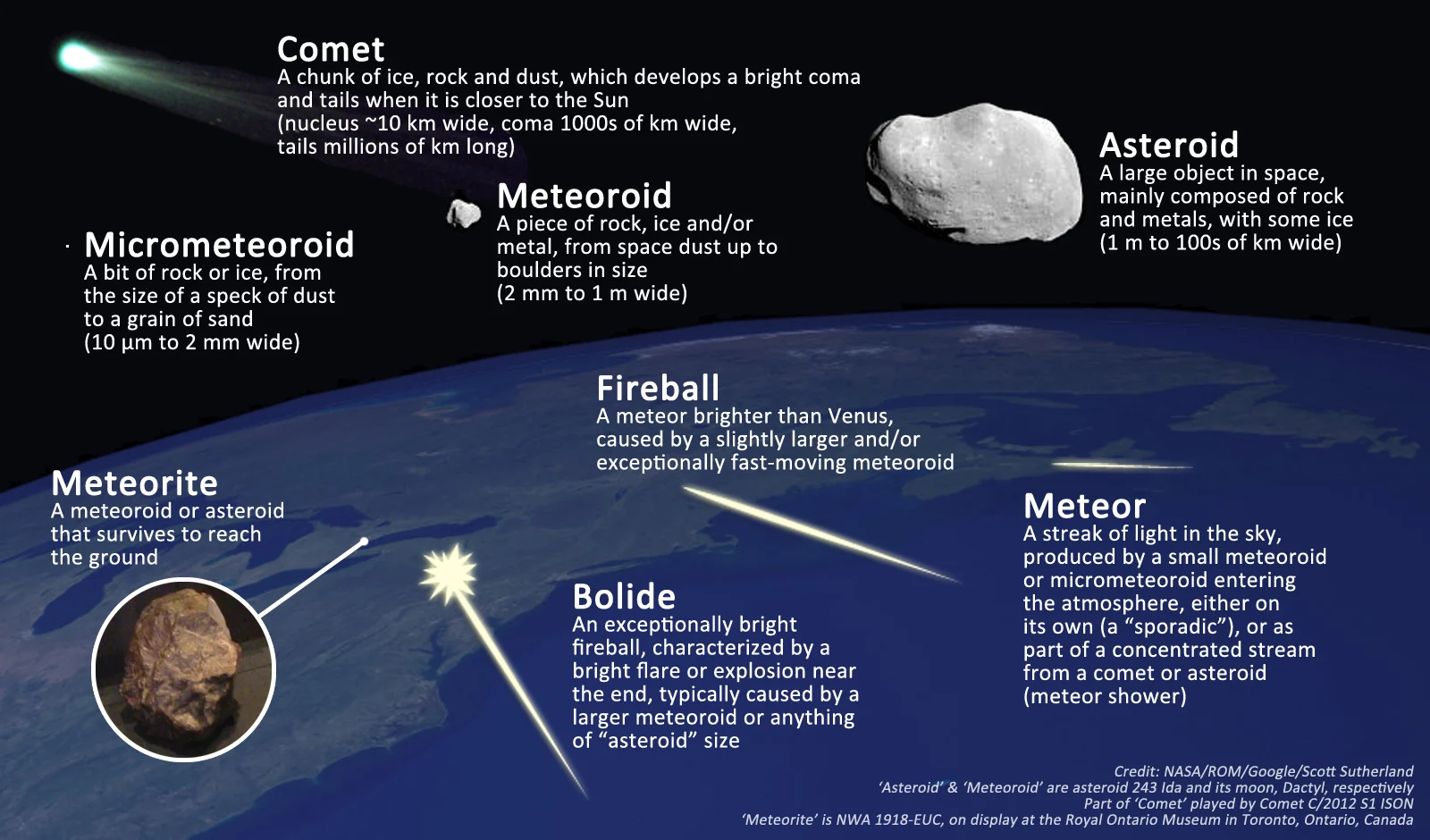
As the meteoroid encounters air molecules in its path, it compresses those molecules together. This slows the meteoroid down, and if it compresses the air hard enough, that air will glow. This is the 'meteor' flash that we see.
If these meteoroids are tiny, such as microscopic dust grains, we may not notice them at all. If something more significant — the size of a grain of sand up to a pebble or even larger — passes over places we inhabit, though, they are much more noticeable. The larger and faster-moving the meteoroid is, the brighter the resulting meteor will be. Brighter ones are referred to as fireballs, while the brightest (which usually involve the meteoroid exploding during flight) are often called bolides.
The colours of these meteors depend on several factors. This includes the concentration of gases compressed ahead of the meteoroid and the minerals and metals found in the meteoroid itself.
If a meteoroid is large enough and moving slowly enough as it makes its plunge through the atmosphere, pieces of it can reach the ground intact. If we find these, we call them meteorites.
Read more: Got your hands on a space rock? Here's how to know for sure!











